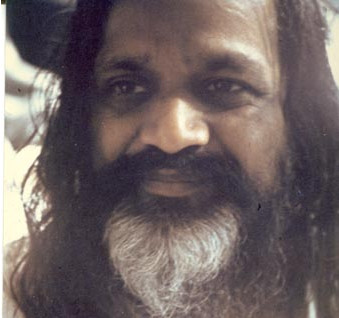Why Meditate?
Published studies of scientific research document the potential health benefits of meditation. They report the positive effects of meditation that can include decreased pain, lower anxiety levels, mental and emotional health, and greater happiness and well-being.
Emotional Well-Being
The Mayo Clinic reports on contemporary research which shows that meditation can reduce stress and help you to be calmer throughout the day. They report that meditation can have a positive influence on thoughts and emotions during and after a session. And that a meditation practice can bring greater levels of emotional well-being, including a reduction of negative emotions and increasing levels of patience and tolerance.


Physical Health
Research shows that a meditation practice can achieve elevated levels of physical health.
It has been shown to have a positive influence on conditions such as asthma, cancer, chronic pain, and heart disease.
The National Institutes of Health reports that many research studies suggest that meditation may be helpful for a variety of conditions, such as high blood pressure, irritable bowel syndrome, and ulcerative colitis.
Mental Health
Recent research also suggests that people practicing meditation can enjoy higher levels of mental health. Scientific studies show that meditation can control anxiety, reduce stress, fight age-related memory loss, combat addiction, generate kindness, and increase imagination.
Meditation can take a person past depression and anger to enter a state of inner peace.
A meditation practice can bring a higher level of self-awareness.

So Let’s Meditate!
If meditation practices have all these health benefits, then let’s start practicing!
But wait! While all these mental, emotional, and physical benefits are reported in scientific studies, there is no guarantee that anyone who starts meditating will actually experience these benefits. They are only potential benefits based on the statistical result obtained by a group of people. Actualizing them depends on the practice of the individual. And the degree of any benefit that one will experience relies on the quality of the meditation technique a person practices.
How to Meditate
There are many forms of meditation practice originating in cultures around the world. All the effective practices have this simple principle in common: Positive changes in patterns of thought can lead to changes in other dimensions of human experience.
Choosing a meditation technique is a highly personal decision. And the actual practice of a chosen technique is unique to each individual.
Forms of Meditation
Guided Meditation
A guided meditation leads the practitioner to form mental images of places and situations that induce a state of relaxation. The mental images can have the sensations of sight, sound, smell, touch, and taste. Often, the process is led by a teacher or guide, either live or recorded.
Mindfulnesss Meditation
In mindfulness meditation, the practitioner brings their conscious focus to what is transpiring in the present moment. They pay attention to their breath and observe their thoughts and emotions without passing judgment on them.
A mindfulness meditation practice can be a walking meditation; a very conscious way of walking, and also a mindful way of walking through each moment of life every day.
Mantra Meditation
The practitioner speaks or chants a powerful word or statement that induces a deep spiritual state.
Qigong
Qigong is a conscious practice of body posture, movement, breathing, and meditation that is part of traditional Chinese medicine.

Transcendental Meditation®
Transcendental Meditation encourages a restful state of mind beyond thinking. The goal is to go beyond the surface level of your awareness to a state of deep inner silence.
This meditation technique seeks to allow the body to settle into a state of profound rest and relaxation so that the mind achieves a state of inner peace, without needing to use concentration or effort.
Christian Meditation
Christian meditation is the practice of focusing on specific thoughts of a spiritual nature, often related to Jesus and a specific Bible passage. It seeks to heighten the experience of divine communion and a personal experience of God.
St. Teresa of Avila said this about Christian meditation:
By meditation, I mean prolonged reasoning with the understanding, in this way. We begin by thinking of the favor which God bestowed upon us by giving us His only Son; and we do not stop there but proceed to consider the mysteries of His whole glorious life.


Yoga
While the practice of yoga can involve a series of postures and controlled breathing, it is also a practice of meditation.
Sadhguru says this about yoga:
Yoga is not about bending and twisting your body or holding your breath. It is a mechanism and a technology to get you to that state of experience where you see reality just the way it is.
Attunement Meditation
Attunement Meditation is a practice that activates conscious thoughts and emotions to bring an elevated spiritual state. It is a mindfulness meditation that encourages the practitioner to attune to the source of life within them, and pay attention to the human energy field around them.
Attunement Meditation is part of the spiritual practice of Attunement, and it is the basis for Attunement as an energy medicine practice.


Meditation: The Straw That Stirs the Drink
Think of a drink with a straw. Any drink. Perhaps your favorite.
Of course, the liquid in the drink is the main feature of the drink. That’s why you got it in the first place.
Now think of the straw. You probably didn’t get the drink for the sake of a straw. But the straw can be a wonderfully important feature. It brings the liquid to your mouth. And it stirs the drink. And that’s the origin of this little figure of speech— the straw that stirs the drink.
In meditation, thoughts are like that. They are not an end, in and of themselves. They are not the liquid. Thoughts are the straw. The mind can activate all the rest of what can happen in the practice of meditation.
The root of the word, meditate, means to think over. And what happens in the mind is vital to the practice of meditation. But it is a means to an end.
In his epic poem, If, Rudyard Kipling said it this way:
If you can think—and not make thoughts your aim…
The Greater Purpose of Meditation
(And What Is Meditation Really?)
If thoughts are not the greater aim of meditation, what is?
Here is what I know from my own experience. When I meditate, I activate all the rest of my human experience. My emotions flow. My body comes alive in a new way. I become more keenly aware of the space I am in.
People of indigenous cultures pray to spiritual entities and to ancestors.
Meditation sets in motion a process by which I attune to the spiritual source within me. That’s not just a philosophical idea or a religious belief. It is a cracking open of my heart. It is a visceral activation of my body. It is knowing a love so precious that I embrace it, and find that it embraces me.
When I meditate, I know my Attunement with the Universe. I am part of it all.
I know Attunement with all the dimensions of me—body, mind, heart, and soul. I feel a creative power moving in and through me. I feel empowered to live a happy, fulfilling life.
At the same time, I become mindful of the people and the world around me. I become aware that the power moving inside me is now also moving in the space in which I find myself. The Attunement current I know is being shared with the people in my life. We are attuning together.
This goes way beyond a mental exercise. It becomes a full-body experience; a heart-opening exhilarating ecstasy.
The greater purpose of meditation is Attunement:
- Attunement with the source of love, wisdom, power, and life within me
- Attunement of all the dimensions of me into the harmonious, dynamic, expression of who I am
- The Attunement of my world and the people in it
This is what meditation is, in the fullest sense of the word. It is the individual becoming conscious of the conscious universe all around them.










